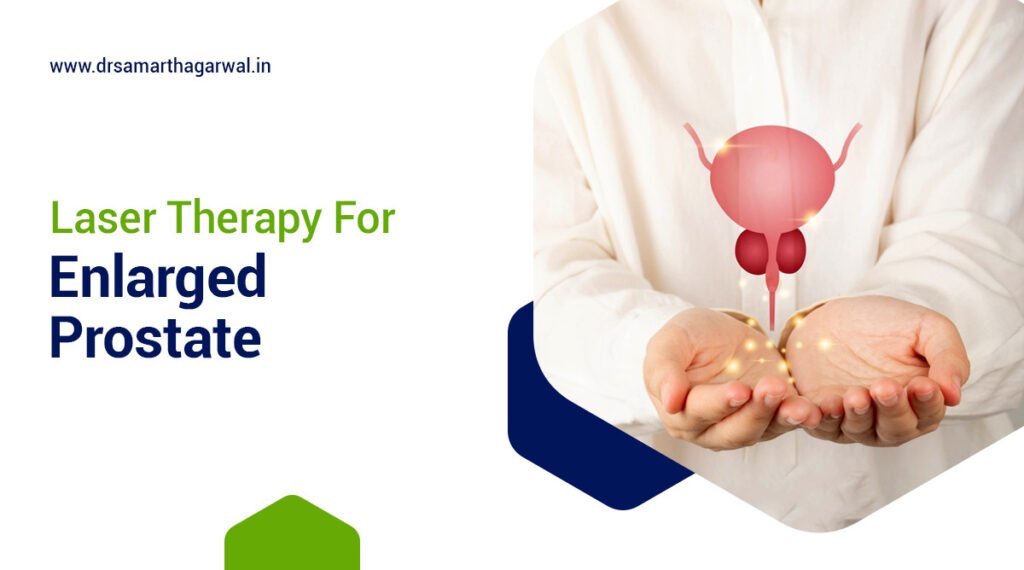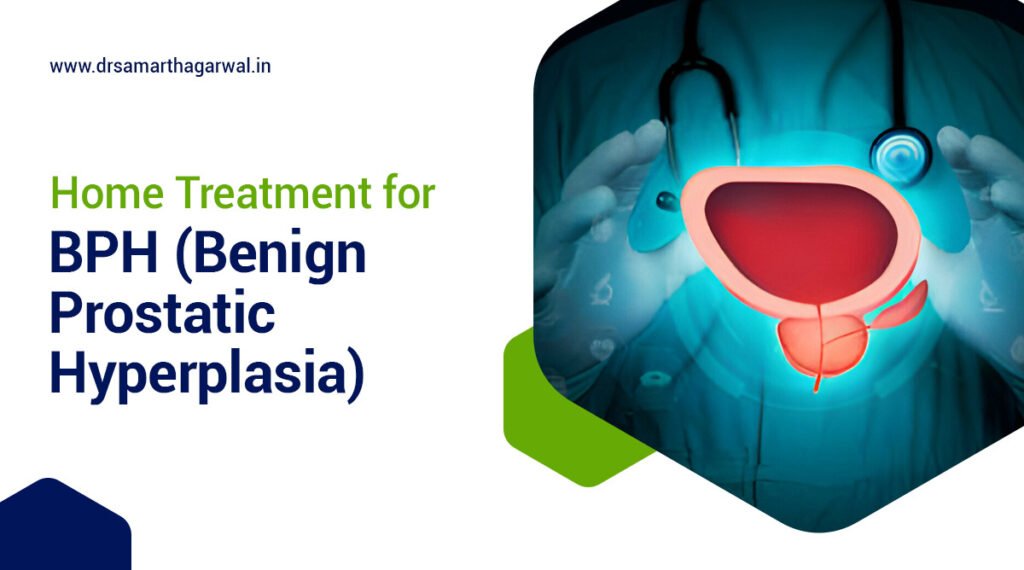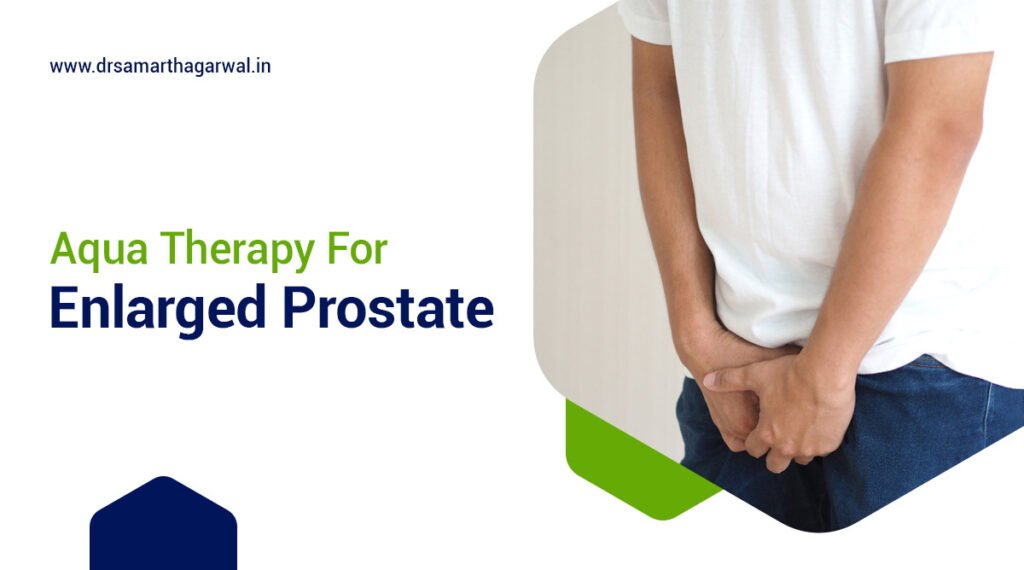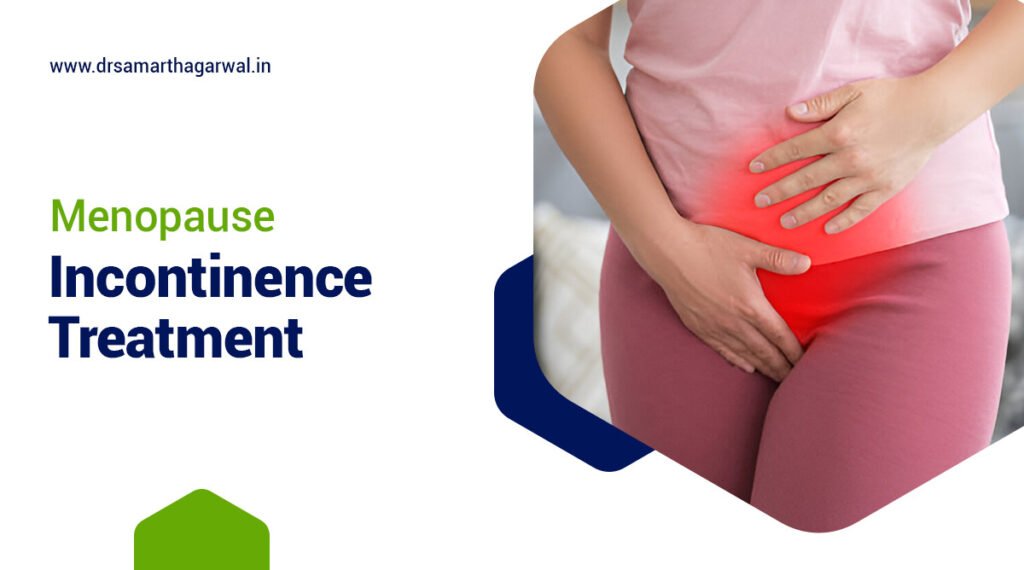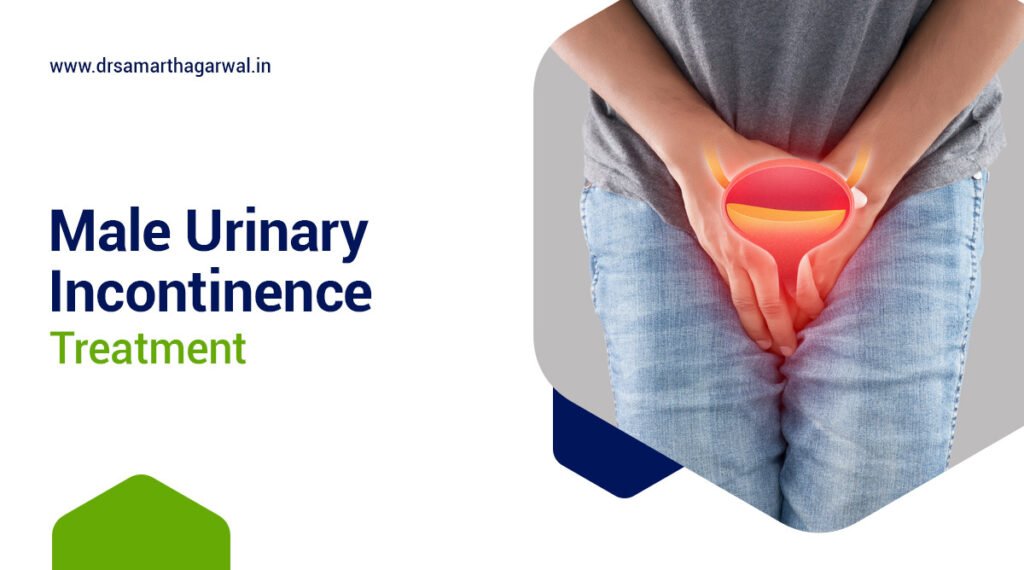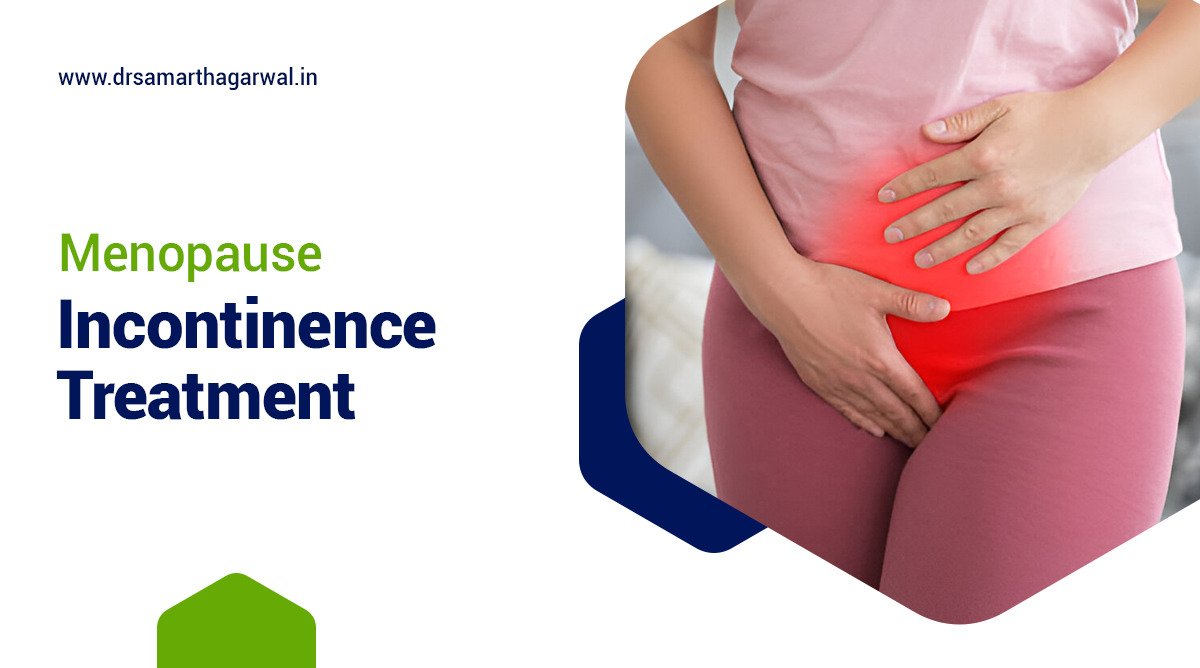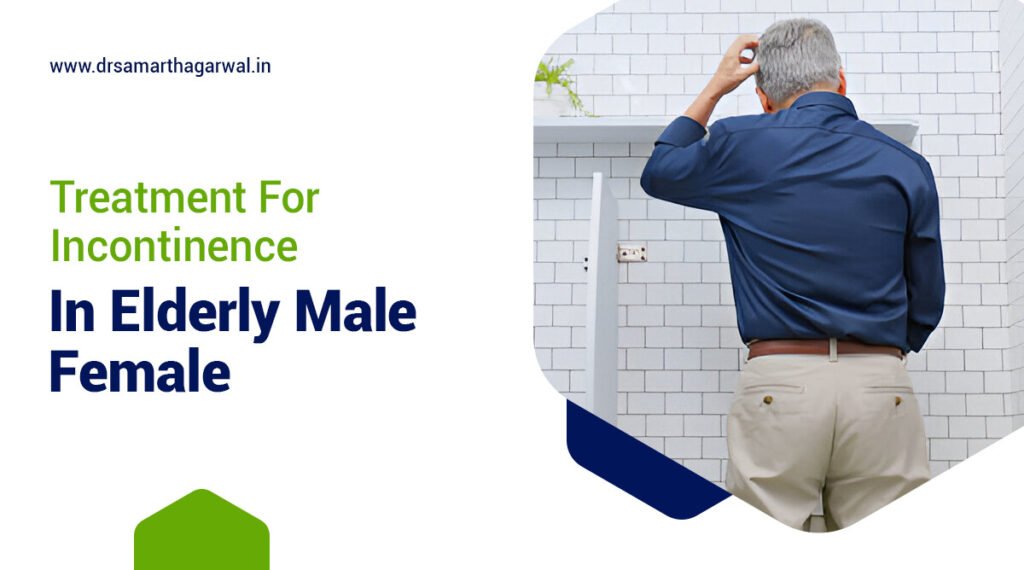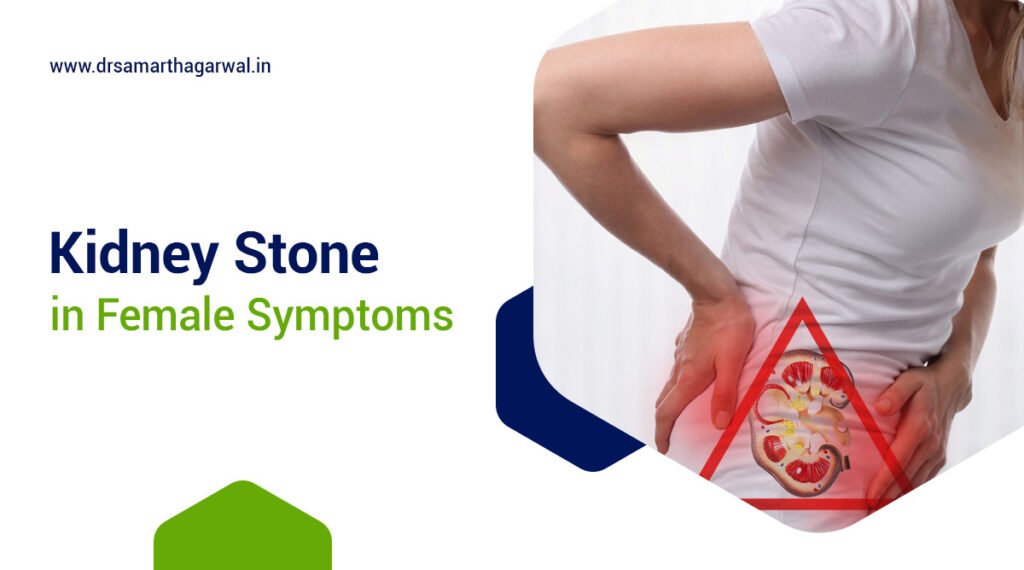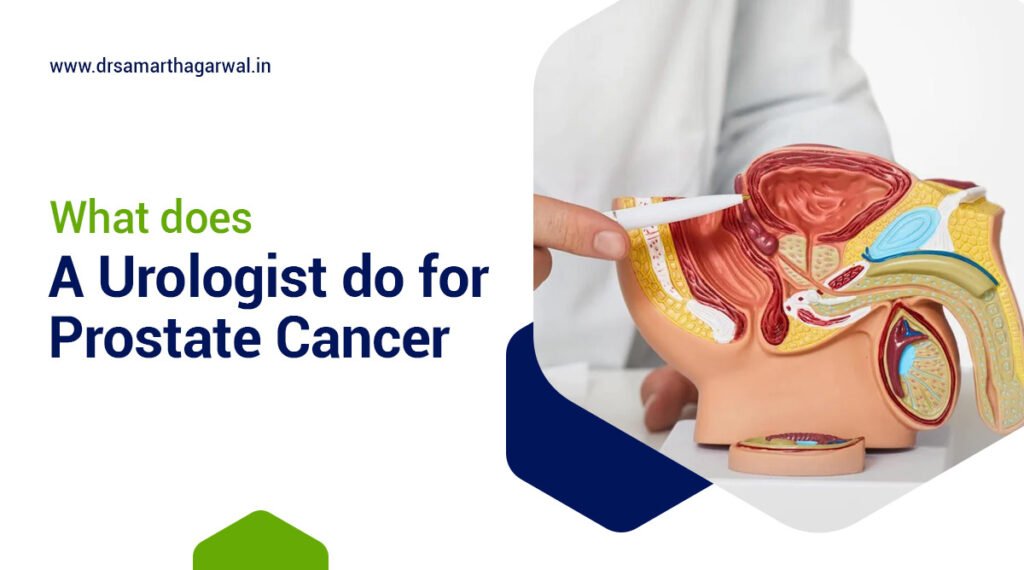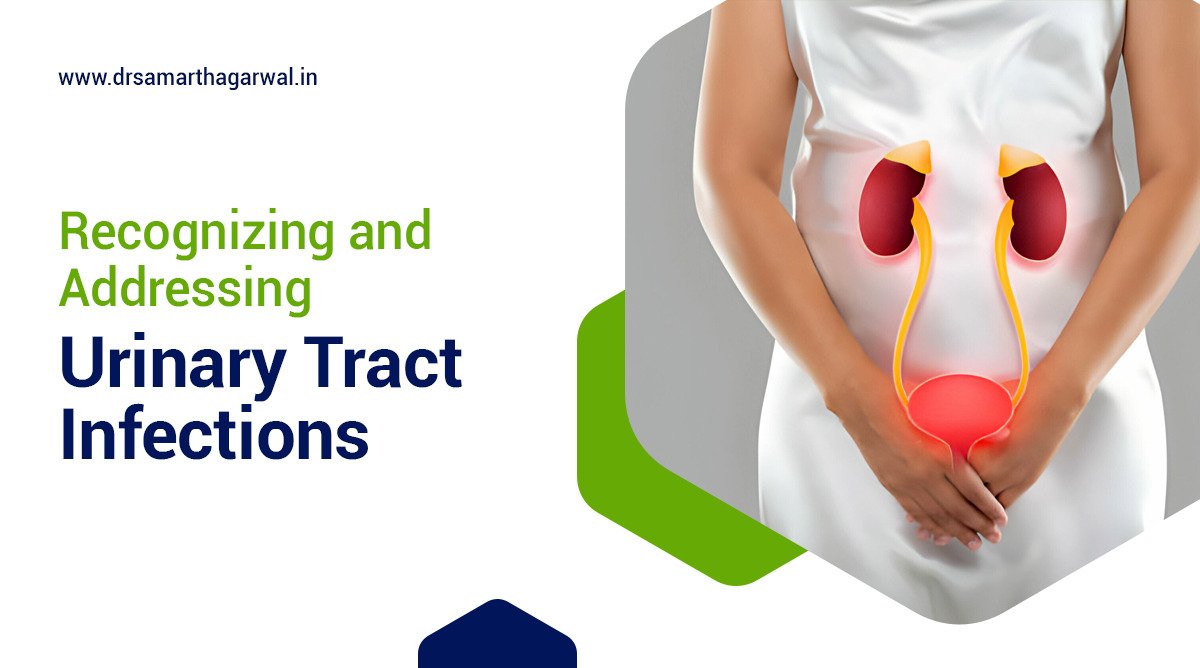Laser therapy for enlarged prostate, also known as benign prostatic hyperplasia (BPH), has emerged as a revolutionary treatment option for men suffering from urinary symptoms associated with this condition. This minimally invasive procedure utilizes advanced laser technology to effectively reduce the size of the prostate gland, alleviating urinary tract issues and improving overall quality of life. Laser therapy offers numerous benefits as an alternative to traditional surgical methods and has become increasingly popular among patients and urologists.
What Are The Advantages of Laser Therapy over Traditional Methods
Laser therapy for an enlarged prostate presents several significant advantages compared to traditional surgical methods, such as transurethral resection of the prostate (TURP). These advantages include:
- Minimally Invasive Nature:
- Reduced bleeding
- Shorter hospital stays
- Faster recovery times
- Precision Targeting:
- More accurate targeting of excess prostate tissue
- Minimizes damage to surrounding healthy tissue
- Reduces the risk of complications
- Lower Incidence of Side Effects:
- Less post-operative pain and discomfort
- Significantly reduced risk of urinary incontinence
- Lower likelihood of erectile dysfunction
- Improved Preservation of Sexual Function:
- An attractive option for men concerned about maintaining the quality of life after treatment
- Suitability for High-Risk Patients:
- Can be performed on patients who may not be suitable candidates for traditional surgery due to medical conditions or medication use
These benefits make laser therapy a compelling choice for treating benign prostatic hyperplasia (BPH).
Types of Laser Therapies for Enlarged Prostate
Holmium Laser Enucleation of the Prostate (HoLEP)
Holmium Laser Enucleation of the Prostate (HoLEP) utilizes a holmium laser to precisely remove excess prostate tissue, effectively reducing the size of the prostate gland. HoLEP is particularly suitable for men with larger prostates and has shown excellent long-term results in improving urinary flow and reducing symptoms associated with BPH. The procedure involves inserting a laser fiber through the urethra to separate the enlarged prostate tissue from its surrounding capsule carefully.
One of HoLEP’s key advantages is its ability to treat prostates of virtually any size, making it a versatile option for patients with varying degrees of enlargement. The holmium laser’s unique properties allow for both cutting and coagulation of tissue, resulting in minimal bleeding during the procedure. This aspect of HoLEP contributes to its excellent safety profile and reduced risk of complications. Additionally, the procedure preserves removed prostate tissue for pathological examination, which is beneficial for ruling out the presence of prostate cancer or other abnormalities.
GreenLight Laser Therapy (Photoselective Vaporization)
GreenLight Laser Therapy, also known as Photoselective Vaporization of the Prostate (PVP) utilizes a high-powered green light laser to vaporize excess prostate tissue, effectively reducing the gland size and improving urinary flow. The GreenLight laser is specifically designed to target hemoglobin in the blood, making it highly effective at vaporizing prostate tissue while minimizing bleeding and preserving surrounding healthy tissue.
One of the key advantages of GreenLight Laser Therapy is its ability to provide immediate relief from BPH symptoms. Patients often experience improved urinary flow and reduced urinary urgency shortly after the procedure. The therapy is particularly well-suited for men who are taking blood-thinning medications, as the laser’s coagulation properties help minimize bleeding risks.
Furthermore, GreenLight Laser Therapy typically requires shorter catheterization times compared to traditional surgical methods, allowing for faster recovery and return to normal activities. The procedure’s effectiveness and safety profile have made it a popular choice among both patients and urologists for the treatment of benign prostatic hyperplasia.
Thulium Laser Prostate Surgery
Thulium Laser Prostate Surgery utilizes a thulium laser, which operates at a wavelength that is highly absorbed by water, making it particularly effective for precise tissue vaporization and resection. The thulium laser’s unique properties allow for excellent hemostasis, reducing bleeding during the procedure and improving visibility for the surgeon. This type of laser therapy is known for its ability to provide a smooth and even vaporization of prostate tissue, resulting in improved urinary flow and symptom relief.
One of the key advantages of Thulium Laser Prostate Surgery is its versatility in treating prostates of various sizes. The procedure can be tailored to the individual patient’s needs, allowing for either vaporization or enucleation techniques depending on the specific case. Thulium laser therapy also offers excellent preservation of sexual function and continence, making it an attractive option for men concerned about maintaining their quality of life after treatment. Additionally, the procedure typically results in shorter catheterization times and faster recovery compared to traditional surgical methods, enabling patients to return to their normal activities more quickly.
The Laser Therapy Procedure
Pre-operative Preparation and Assessment
Before undergoing laser therapy for an enlarged prostate, patients undergo a comprehensive pre-operative preparation and assessment process. This crucial step ensures the safety and effectiveness of the procedure. Initially, the urologist conducts a thorough evaluation of the patient’s medical history, including any pre-existing conditions, medications, and previous treatments for benign prostatic hyperplasia (BPH). A detailed physical examination is performed, often accompanied by various diagnostic tests such as prostate-specific antigen (PSA) blood tests, urinalysis, and uroflowmetry to assess urinary flow rate.
Furthermore, imaging studies like transrectal ultrasound may be employed to determine the size and shape of the prostate gland accurately. This information is vital for selecting the most appropriate type of laser therapy and planning the procedure. Patients are typically advised to discontinue certain medications, particularly blood thinners, several days before the surgery to minimize bleeding risks. Additionally, they receive detailed instructions regarding fasting requirements and any necessary bowel preparation. The pre-operative assessment also includes a discussion of the procedure’s potential risks and benefits, allowing patients to make informed decisions and set realistic expectations for their treatment outcomes.
Step-by-Step Process of Laser Prostate Surgery
- Anesthesia Administration: The procedure begins with administering anesthesia, either general or spinal, to ensure patient comfort.
- Patient Positioning: The patient is properly positioned to allow easy access to the urethra.
- Insertion of Cystoscope: A thin, flexible cystoscope is carefully inserted through the urethra and into the bladder. This instrument provides visualization of the prostate gland.
- Laser Fiber Delivery: The laser fiber is precisely delivered through the cystoscope to the prostate gland.
- Laser Therapy: Depending on the type of laser therapy, such as Holmium Laser Enucleation of the Prostate (HoLEP) or GreenLight Laser Therapy, the surgeon vaporizes or enucleates the excess prostate tissue.
- Tissue Removal: The laser energy targets and removes the obstructing prostate tissue, creating a wider channel for urine flow. In enucleation techniques like HoLEP, the removed tissue is pushed into the bladder and retrieved with a special instrument.
- Continuous Irrigation: Continuous irrigation is used throughout the surgery to maintain clear visibility and remove debris.
- Procedure Duration: The duration of the procedure typically ranges from 60 to 120 minutes, depending on the size of the prostate and the specific technique used.
Role of Urethral Catheterization
Urethral catheterization plays a crucial role in the laser therapy procedure for an enlarged prostate, serving multiple important functions. Following the completion of the laser treatment, a urethral catheter is typically inserted to facilitate proper bladder drainage during the initial recovery period. This temporary measure is necessary because the treated prostate tissue may swell slightly, potentially obstructing urine flow. The catheter ensures that the bladder can empty effectively, reducing the risk of urinary retention and associated complications. Additionally, it allows for the continuous flushing of the bladder, which helps remove any residual blood clots or tissue debris resulting from the procedure.
The duration of catheterization can vary depending on the specific type of laser therapy performed and individual patient factors. In most cases, the catheter remains in place for 24 to 48 hours post-surgery, although some patients may require longer catheterization periods. During this time, patients are carefully monitored for proper urine output and any signs of complications. The catheter also provides valuable information to the medical team about the patient’s recovery progress, including urine color and volume. Once the urologist determines that the swelling has subsided sufficiently and urine flow has normalized, the catheter is removed, allowing the patient to resume natural urination. Proper care and management of the urethral catheter are essential aspects of the post-operative recovery process.
Mechanism of Action in Laser Prostate Therapy
Tissue Vaporization and Ablation
The mechanism of action in laser prostate therapy primarily revolves around the processes of tissue vaporization and ablation. During the procedure, high-energy laser beams are directed at the excess prostate tissue, causing rapid heating and vaporization of the cells. This intense heat energy effectively transforms the solid prostate tissue into vapor, which is then easily removed from the body. The precision of laser technology allows for targeted treatment of the enlarged areas while minimizing damage to surrounding healthy tissue. Different lasers, such as holmium, thulium, or green light lasers, may be used, each with specific wavelengths optimized for prostate tissue interaction.
In addition to vaporization, some laser therapies also employ tissue ablation techniques. This process involves the layer-by-layer removal of prostate tissue, allowing for more controlled and precise tissue elimination. The ablative effect of the laser energy not only removes the obstructing tissue but also seals small blood vessels in the process, reducing bleeding and improving visibility during the procedure. The combination of vaporization and ablation results in the creation of a wider channel through the prostate, effectively relieving the obstruction caused by benign prostatic hyperplasia (BPH). This mechanism of action leads to an immediate improvement in urinary symptoms and flow rates for many patients undergoing laser prostate therapy.
Prostate Size Reduction and Urinary Flow Improvement
The primary goal of laser prostate therapy is to achieve significant prostate size reduction and subsequent improvement in urinary flow. As the laser energy vaporizes or ablates the excess prostate tissue, it effectively shrinks the overall size of the gland. This reduction in prostate volume directly addresses the underlying cause of benign prostatic hyperplasia (BPH) symptoms. By removing the obstructing tissue, the therapy creates a wider and more open channel through the prostatic urethra, allowing for improved urine passage from the bladder. The immediate effect of this tissue removal is often a noticeable increase in urinary flow rate and a decrease in residual urine left in the bladder after voiding.
The improvement in urinary flow following laser prostate therapy is typically substantial and long-lasting. Patients often experience a significant reduction in lower urinary tract symptoms, such as frequent urination, urgency, weak stream, and nocturia. The enhanced urinary flow not only alleviates these bothersome symptoms but also reduces the risk of complications associated with chronic urinary obstruction, such as bladder stones or recurrent urinary tract infections. Furthermore, the precision of laser therapy allows for tailored treatment based on the individual patient’s prostate anatomy and size, ensuring optimal outcomes in terms of symptom relief and quality of life improvement.
Preserving Sexual Function and Continence
One of the key advantages of laser prostate therapy is its ability to effectively treat benign prostatic hyperplasia (BPH) while preserving sexual function and urinary continence. The precise nature of laser energy allows for targeted treatment of the obstructing prostate tissue without causing significant damage to the surrounding neurovascular bundles responsible for erectile function. This selective tissue removal helps minimize the risk of erectile dysfunction, a common concern associated with more invasive prostate surgeries. Additionally, the preservation of the bladder neck and external sphincter during laser therapy contributes to maintaining urinary continence, reducing the likelihood of post-operative incontinence.
The ability to preserve sexual function and continence is particularly important for maintaining patients’ quality of life following BPH treatment. Laser therapies, such as Holmium Laser Enucleation of the Prostate (HoLEP) and GreenLight Laser Therapy, have demonstrated excellent outcomes in preserving these crucial functions. While some patients may experience temporary changes in sexual function or urinary control immediately after the procedure, these effects are typically short-lived and resolve as healing progresses. The emphasis on function preservation, combined with the effective treatment of BPH symptoms, makes laser prostate therapy an attractive option for men seeking to address their urinary issues without compromising other aspects of their well-being.
Post-Operative Care and Recovery
Immediate Post-Surgery Management
Immediate post-surgery management following laser prostate therapy is crucial for ensuring optimal recovery and minimizing complications. In the hours immediately after the procedure, patients are closely monitored in a recovery area where vital signs, urine output, and overall condition are regularly assessed. The urethral catheter, typically inserted during or after the surgery, remains in place to facilitate proper bladder drainage and allow for continuous bladder irrigation. This irrigation helps remove any residual blood clots or tissue debris, promoting healing and reducing the risk of urinary tract infections.
Pain management is an essential aspect of immediate post-operative care, although most patients experience only mild discomfort following laser prostate therapy. Oral or intravenous pain medications may be administered to ensure patient comfort. Additionally, patients are encouraged to start ambulating as soon as possible to promote circulation and prevent complications such as deep vein thrombosis. Fluid intake is gradually increased, and patients are monitored for signs of urinary tract infection or bleeding. The medical team provides detailed instructions on catheter care, medication use, and activity restrictions before the patient is discharged, typically within 24 to 48 hours after the procedure, depending on individual recovery progress and the specific type of laser therapy performed.
Expected Recovery Timeline
The expected recovery timeline following laser prostate therapy varies depending on the specific procedure performed and individual patient factors. Generally, patients experience a relatively rapid recovery compared to traditional surgical methods. In the first few days post-surgery, patients may experience mild discomfort, urinary urgency, and frequency, which gradually improve. The urethral catheter is typically removed within 24 to 48 hours after the procedure, allowing patients to resume natural urination. Most individuals can return to light activities within a week, although strenuous exercise and heavy lifting should be avoided for several weeks to allow for proper healing.
Complete recovery and realization of full benefits from laser prostate therapy usually occur over a period of 4 to 6 weeks. During this time, patients may notice gradual improvements in urinary flow and a reduction in BPH symptoms. It’s common to experience some blood in the urine for several weeks after the procedure, which typically resolves on its own. Sexual function may be temporarily affected but usually returns to normal within a few weeks to months. Follow-up appointments with the urologist are scheduled to monitor recovery progress and address concerns. While individual experiences may vary, most patients report significant improvement in their quality of life and urinary symptoms within the first month following laser prostate therapy.
Potential Side Effects and Complications
While laser prostate therapy is generally considered safe and effective, patients need to be aware of potential side effects and complications. Common temporary side effects include a mild burning sensation during urination, increased urinary frequency and urgency, and blood in the urine. These symptoms typically resolve within a few weeks as the prostate heals. Some patients may experience retrograde ejaculation, where semen enters the bladder instead of exiting through the penis during orgasm. This condition is usually permanent but does not affect sexual pleasure or overall health. Urinary tract infections can occur in a small percentage of cases and are typically treated with antibiotics.
More serious complications, although rare, can include urinary incontinence, erectile dysfunction, or urethral stricture (narrowing of the urethra). The risk of these complications is generally lower with laser therapy compared to traditional surgical methods. In very rare instances, patients may require a repeat procedure if symptoms persist or recur. Patients must follow post-operative instructions carefully and report any unusual symptoms to their healthcare provider promptly. While the potential for side effects exists, the majority of patients undergoing laser prostate therapy experience significant improvement in their urinary symptoms and quality of life, with minimal long-term complications.
Laser Therapy vs Transurethral Resection of the Prostate (TURP)
Can the prostate grow back after laser surgery?
While laser surgery for an enlarged prostate, such as Holmium Laser Enucleation of the Prostate (HoLEP) or GreenLight Laser Therapy, effectively removes excess prostate tissue, it’s important to understand that the prostate can potentially regrow over time. This regrowth is not a result of the surgery itself but rather a continuation of the natural aging process and hormonal factors that initially led to benign prostatic hyperplasia (BPH). However, the extent and rate of regrowth after laser surgery are typically much slower and less significant compared to the original enlargement.
Studies have shown that laser prostate therapies, particularly HoLEP, offer excellent long-term outcomes with a low rate of retreatment. The precision of laser technology allows for more complete removal of obstructing tissue, potentially reducing the likelihood of significant regrowth. Factors such as age, hormone levels, and overall health can influence the potential for prostate regrowth. Regular follow-ups with a urologist are essential to monitor any changes in prostate size or symptoms over time. In the rare cases where retreatment is necessary due to regrowth, patients often have multiple options available, including repeat laser therapy or other minimally invasive procedures.
How effective is laser surgery for an enlarged prostate?
Laser surgery for an enlarged prostate has proven to be highly effective in treating benign prostatic hyperplasia (BPH) and alleviating associated urinary symptoms. Clinical studies have consistently demonstrated significant improvements in urinary flow rates, reduction in lower urinary tract symptoms, and enhanced quality of life following laser prostate therapies. For instance, Holmium Laser Enucleation of the Prostate (HoLEP) has shown long-term success rates comparable to or even surpassing traditional transurethral resection of the prostate (TURP), with the added benefits of reduced bleeding and shorter hospital stays.
The effectiveness of laser surgery is attributed to its ability to precisely remove obstructing prostate tissue while minimizing damage to surrounding structures. Patients typically experience immediate relief from symptoms such as frequent urination, urgency, and weak urine stream. GreenLight Laser Therapy, another popular laser treatment, has demonstrated durable results with low retreatment rates over long-term follow-up periods. The efficacy of laser surgery is further enhanced by its suitability for treating prostates of various sizes, including very large glands that may be challenging to address with other minimally invasive techniques. Overall, laser surgery for enlarged prostate offers a highly effective treatment option with excellent outcomes and high patient satisfaction rates.
What are the precautions after prostate laser surgery?
Following prostate laser surgery, patients must adhere to several important precautions to ensure optimal recovery and minimize the risk of complications. One of the primary recommendations is to avoid strenuous physical activities, heavy lifting, and vigorous exercise for at least 2-4 weeks after the procedure. This restriction allows the prostate gland to heal properly and reduces the risk of bleeding. Patients are typically advised to increase their fluid intake to help flush the bladder and promote healing while avoiding or limiting caffeine and alcohol consumption, which can irritate the bladder and urethra.
Sexual activity should be avoided for a specified period, usually 2-4 weeks, as recommended by the urologist. When sexual activity resumes, patients should be aware that they may experience retrograde ejaculation, which is a common and usually permanent side effect of the procedure. It’s crucial to take all prescribed medications, including antibiotics if provided, to prevent infection and manage discomfort. Patients should also be vigilant for signs of complications such as severe bleeding, fever, or inability to urinate, and seek immediate medical attention if these occur. Regular follow-up appointments with the urologist are essential to monitor recovery progress and address concerns. By following these precautions, patients can significantly contribute to a smooth recovery and optimal long-term outcomes from their prostate laser surgery.
How serious is prostate laser surgery?
Prostate laser surgery is generally considered a safe and effective procedure for treating benign prostatic hyperplasia (BPH). While it is a surgical intervention, it is less invasive than traditional open prostate surgery and carries a lower risk of serious complications. Laser technology allows for precise tissue removal with minimal bleeding, reducing the overall risk profile of the procedure. However, as with any surgical intervention, there are potential risks and complications that patients should be aware of. These can include urinary tract infections, temporary difficulty urinating, retrograde ejaculation, and in rare cases, erectile dysfunction or urinary incontinence.
The seriousness of prostate laser surgery is mitigated by several factors, including the extensive experience of many urologists with these techniques, the advanced technology used, and the careful patient selection process. Most complications, when they do occur, are typically temporary and manageable.
The procedure is often performed on an outpatient basis or with a short hospital stay, indicating its relatively low-risk nature compared to more invasive surgeries. However, it’s important to note that the procedure’s seriousness can vary depending on individual patient factors such as prostate size, overall health status, and any pre-existing conditions. Patients should have a thorough discussion with their urologist about the potential risks and benefits specific to their case to make an informed decision about undergoing prostate laser surgery.
How long is the laser surgery for prostate removal?
The duration of laser surgery for prostate removal can vary depending on several factors, including the specific type of laser procedure being performed, the size of the prostate gland, and the individual patient’s anatomy. On average, most laser prostate surgeries take between 60 to 120 minutes to complete. For instance, Holmium Laser Enucleation of the Prostate (HoLEP) typically ranges from 60 to 150 minutes, with longer times usually associated with larger prostate glands. GreenLight Laser Therapy, another common laser procedure, generally takes 60 to 90 minutes.
It’s important to note that the total time a patient spends in the operating room may be longer than the actual laser procedure itself. This additional time accounts for anesthesia administration, patient positioning, and necessary pre-and post-operative care within the surgical suite. While laser prostate surgery may take longer to perform compared to some traditional surgical methods, it often results in shorter hospital stays and faster overall recovery times. The precise nature of laser technology allows surgeons to efficiently remove excess prostate tissue while minimizing damage to surrounding structures, contributing to improved outcomes despite the potentially longer operative time. Patients should discuss their procedure’s expected duration with their urologist during the pre-operative consultation.

Contact Dr. Samarth Agarwal if you have any questions or concerns about your Urinary health!



